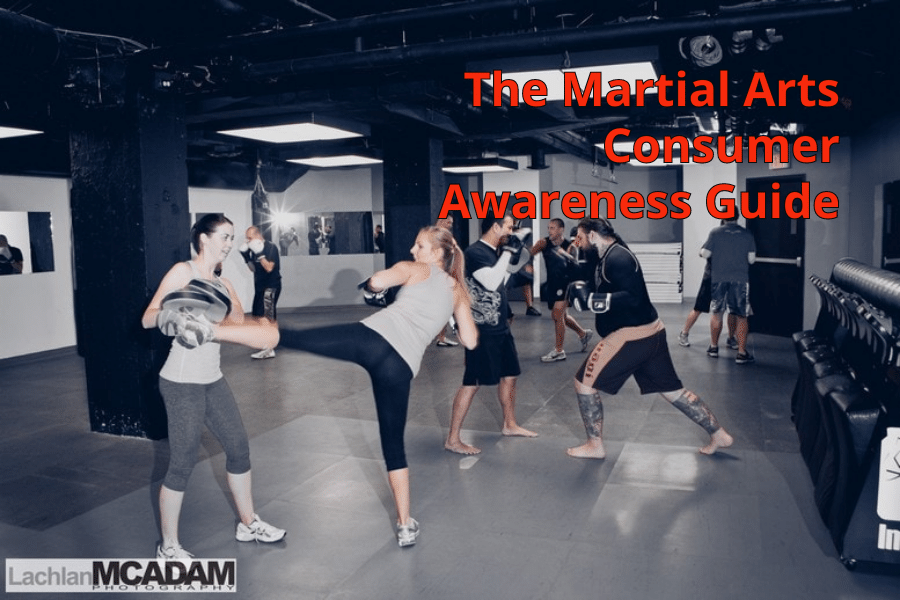
How to make an informed, intelligent decision when picking the perfect Martial Arts School

Hi, this is Ritchie Yip. Thanks very much for reading my consumer guide. I’m grateful for the opportunity to provide you with this information about Martial Arts and to help you choose the right Martial Arts school.
I am the head instructor and owner of the InFighting Mixed Martial Arts Academy. I’ve been studying Martial Arts since 1997 and I’ve been teaching professionally since 2004. In that time, I’ve learned that Martial Arts is a subject of great confusion. In fact, people have so many misconceptions about Martial Arts that I decided to offer this consumer education guide so that when you select a Martial Arts school, you can make an informed and intelligent decision.
In just a moment, I’ll share with you 8 costly misconceptions about Martial Arts. Plus, I’ll offer 4 recommendations. Then, I’ll give you 6 questions you should ask any Martial Arts instructor before you step foot into one of their classes.
Misconception #1
You can only start Martial Arts as a child.
I was 21 when I first started studying Martial Arts. Most of my students are in their late 20’s and early 30’s and since my school specializes in introducing Martial Arts to absolute beginners, many of them had never studied Martial Arts when they first came to see me. As well, I have many students in their 40’s and 50’s. My oldest student is 58. You are never too old to do anything. And that includes Martial Arts.
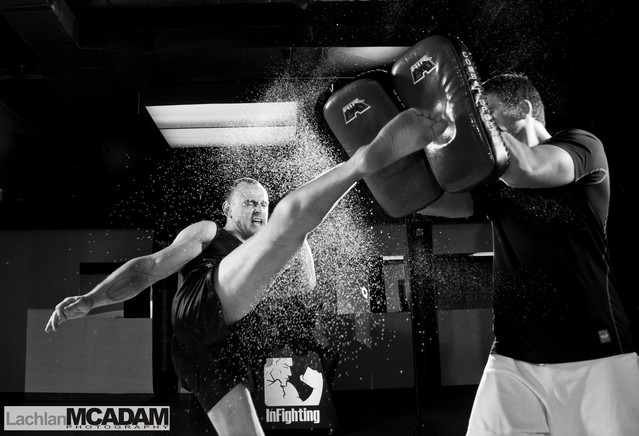
Misconception #2
The only reason to study Martial Arts is for self defense.
Having the ability to protect yourself and your loved ones from violent criminals is a skill that everyone should possess–just like First Aid. Everyone should know basic CPR, how to control arterial bleeding and how to help someone who’s choking. The same is true with Self Defense. I think everyone should possess some basic self protection skills that will absolutely stop a violent attacker regardless of your size, strength and athletic ability.
There are many benefits to studying Martial Arts, and learning how to defend yourself from a bigger, stronger attacker is just one of them.
But more than this, training Martial Arts is a fantastic way to get in shape and to stay in shape. Martial Arts is a fun, engaging and social way of maintaining an active healthy lifestyle while shedding those unwanted pounds. Many people study Martial Arts as a way to manage stress and aggression. It is a great way to attain a higher level of self esteem and confidence. And Martial Arts will help you with your self discipline.
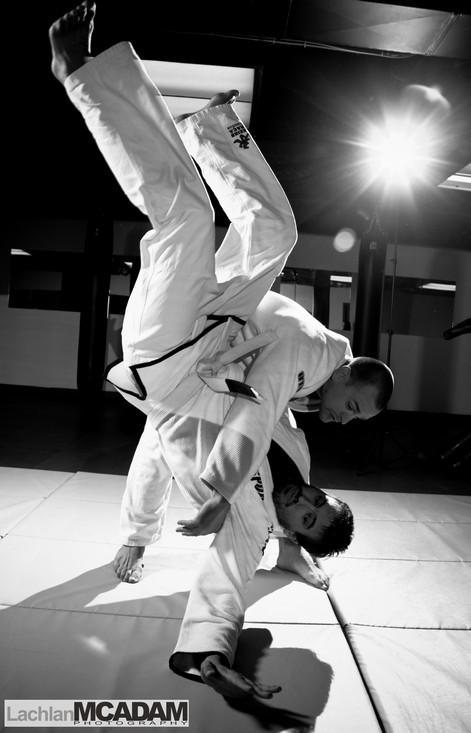
Misconception #3
One style of Martial Arts is just as good as another.
No. In Martial Arts, there are two primary styles. Martial Arts can be competition centered or Martial Arts can be self defense centered.
Martial Arts that are competition focused are: Judo, Kickboxing, Brazilian Jiu Jitsu, and MMA.
Martial Arts that are self defense centered are: Krav Maga, Escrima, Hapkido, and Jeet Kune Do.
The confusion lies in the cross over between competitive Martial Arts and Martial Arts that are self defense centered. Competitive Martial Arts can be highly effective forms of self defense–Kickboxing and Brazilian Jiu Jitsu both have excellent tools to use against a violent attacker.
As well, self defense centered Martial Arts often train their students as if they were athletes. Arts such as Krav Maga and Jeet Kune Do will often have students do intense warm ups and arduous training drills.
Ask yourself: What are you looking to attain from the practice and study of Martial Arts? Are you looking for a new way to stay fit? Are you seeking a higher degree of confidence from mastering a complex and intricate art form? Do you want to fight competitively? Do you want to learn how to defend yourself from a violent attacker?
You may have many reasons for wanting to study Martial Arts. The critical thing is to find a school that matches your needs exactly.
Misconception #4
As long as I am careful, I can’t hurt myself in a Martial Arts class.
Martial Arts are inherently dangerous. A Martial Art is the art of war. It is combat. If it is not dangerous, then you are attending a glorified aerobics class.
A malicious training partner can instantly dislocate your arm.
Or a well-intentioned, but uninformed, training partner can accidentally punch you in the nose.
As well, you can sprain your knee executing a kick with poor form on a heavy bag.
It is up to an experienced instructor to have the insight to foresee all of these mishaps and ensure that they do not occur.
It is the responsibility of the instructor to “fire” malicious and uncaring students.
Finally, only an experienced instructor knows the necessary safety precautions to implement during a lesson to make certain that accidents are minimized.
Safety needs to be—100%—the top concern of the instructor. Every Martial Arts technique is dangerous. Let me repeat this statement: EVERY Martial Arts technique is dangerous. If you do not sense that safety is the foremost concern of the teacher, or if there are no safety elements within every lesson, it is critical that you leave the school immediately. Your personal safety is more important than anything else.
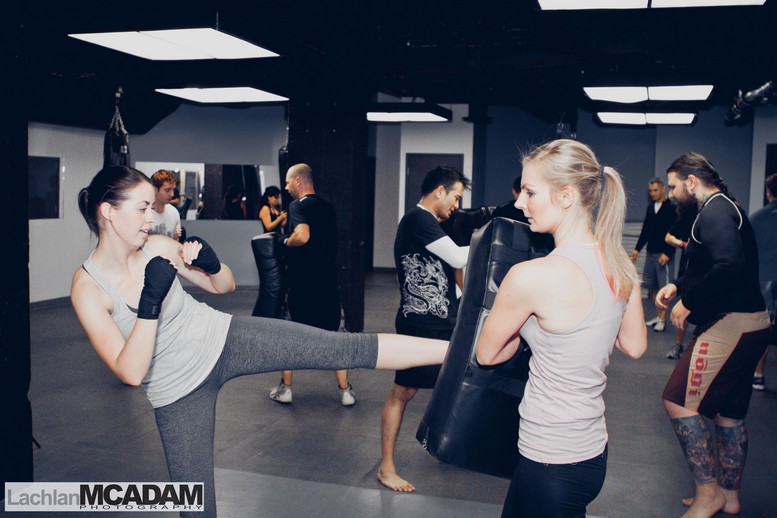
Misconception #5
I should join the Martial Arts school that has the coolest equipment.
Not true. Equipment is completely irrelevant to the quality of the instruction you’ll receive. I’ve been teaching professionally since 2004 and for years I have regularly run classes with 30 plus people in attendance with the bare minimum of equipment. It wasn’t until 2010 that I installed heavy bags in my school.
Yes, a full gym with weights and treadmills, heavy bags, throwing dummies, a boxing ring or crash mats—all of these things can add value in addition to the instruction that you’re receiving. But, the quality of the instruction needs to be paramount. Don’t let the fancy equipment distract you. Make sure the instruction you are receiving is first rate.
Misconception #6
As long as the instructor has a black belt or is a World Champion, they should be able to give me high quality, professional instruction.
This is wrong. A person may be a Black Belt in technique and in fighting skill, but a White Belt in teaching.
I’ve been trained by world class competitors in Wrestling, Brazilian Jiu Jitsu, Boxing, and Kickboxing—and only a handful of the world champions that I studied under could explain and articulate the intricacies of the techniques. They were World Champions at fighting but only a few were World Champions at teaching.
You could not become a world champion if you were coached by Mike Tyson (40 KO’s in 58 fights). However, you’d probably be able to attain a very high level of skill with Tyson’s coach and mentor Cuss D’Amato (only one amateur fight—which he lost). Same goes for studying with a Black Belt.
There are teachers, and there are fighters. If your goal is to learn, and become a skilful Martial Artist, you should seek out people who have dedicated at least as much time to learning how to teach as they have learning how to kick ass. You need to find someone who is a Black Belt in coaching and a World Champion in teaching.
Misconception #7
It is definitely better if there are fewer students in the class.
This is true sometimes, and sometimes it is not.
If the instructor is careless and unprofessional it doesn’t matter if there are 2 people in the class or 42 people, you’re just not going to learn anything. Over the years, I’ve personally witnessed instructors sitting at their desks surfing the web when only 2 students decided to show up for group class. “Pfft! What’s the point?” they would mumble to themselves. You do not want to pay an instructor with such poor work ethic.
As well, I’ve attended huge Martial Arts seminars with hundreds of people in attendance, where the instructor was electrifying and dynamic enough to make the most intricate move seem simple and interesting for everyone—from the beginner to the seniormost student.
It’s not the number of students, it’s the quality of students and the quality of the instruction. Walking in to a Martial Arts class and seeing tonnes of students definitely shows that the instructor has a strong following and that they are capable and skilled as a coach. But, it is important that your Martial Arts instructors are selective with who they’ll take on as students. Some instructors will simply take any student who is willing to pay. As you may remember from high school, there are good students and then there are bad students. Bad students can be disruptive, insubordinate, and potentially dangerous. If there are bad students training with you or next to you, they can ruin your training experience and quite possibly injure you. I have personally seen cases of gross misconduct by problematic and dangerous students and the instructor’s attitude was, “Well, if I kick him out of the school, who’s going to pay his dues?” It is imperative that you find a Martial Arts instructor who is selective with whom they teach.
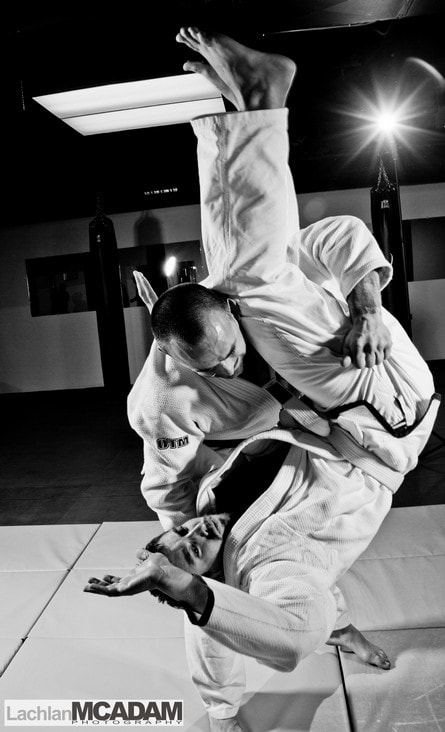
Misconception # 8
The Martial Arts school that offers the lowest price is the Martial Arts school that you should join.
Not always. Not all cars are equal. There are Hyundais and there are Bentleys. The same is true with Martial Art schools.
There are 3 main price considerations.
1) The price that is advertised is not always the price that you wind up paying.
Generally, this is done by getting you in on a super low price. The low price may only allow you to come to certain classes at specific times and there’s a limit to how many classes you can come to. And usually, these low priced classes are at the most unpopular times (Fridays at 8pm) and they are typically taught by a junior instructor. This is your classic “bait and switch” tactic. They’ll get you in the door with a super low monthly tuition and then they’ll immediately try and upgrade you to a higher priced membership that allows access to black belt classes, sparring classes, advanced classes, weapons classes, takedown classes—basically anything that is cooler and more interesting than the mundane bargain basement membership that you originally signed up on.
2) And then, there are hidden fees: belt testing fees, mandatory equipment purchases, mandatory uniform purchases, initiation fees, membership renewal fees, insurance fees, mat fees. All of these things are methods to get you in at a low price and then continuously squeeze more money out of you as your membership continues. The tuition at my school is all inclusive. There are no hidden fees. It’s an honest and transparent way of doing business.
3) As well, if a Martial Arts school is offering a suspiciously low monthly tuition rate, the instruction may be substandard. Many of my students tell me that my rates are almost double that of their previous school. At the same time, I regularly hear from my students (some of whom have 10, 15 or 20 years experience studying Martial Arts) that I am the finest instructor they’ve ever had. From purses to automobiles to Martial Arts instruction, price is directly related to value. One of my long time students who is a lawyer charges $300 an hour. He tells me that senior partners at his firm charge $500 per hour. These individuals are the very best at what they do. They have years of education and years of experience and the price they charge is reflective of that. If you had a potentially life altering decision to make and you needed the counsel of an experienced and highly educated professional, how much faith would you put towards someone who had the “cheapest rates in town”?
My Martial Arts school in Downtown Vancouver charges the highest tuition anywhere in the city. We offer world class Martial Arts instruction with outstanding customer service. We have a stunning 4200 sq. ft facility with full showers, lockers and change rooms. We have the finest equipment: heavy bags, kicking shields, body shields, grappling dummies. We have a state of the art weight room. We provide incredible value to our students with no hidden costs and no underhanded tactics to squeeze out more money once they’ve joined our school. We are simply the best and we charge accordingly.
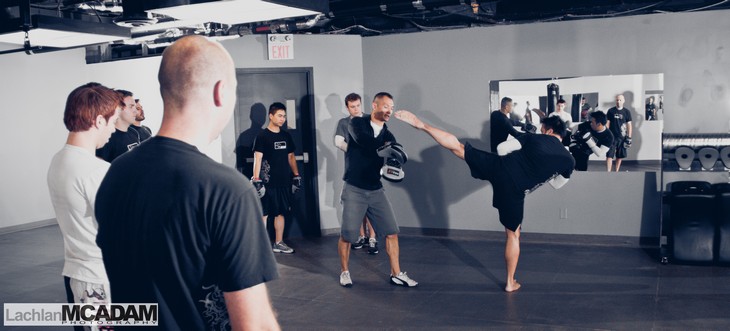
If you’re thinking about taking up Martial Arts, I offer these four recommendations:
Recommendation #1
Make a commitment to yourself to start training Martial Arts right away. The longer you remain inactive, the more your muscles are wasting away and the more weight you’ll gain from your sedentary lifestyle.
Remember, regular exercise will help you live longer, form new brain cells, reduce depression, reduce cardiovascular disease, lower cholesterol, prevent and control diabetes, reduce blood pressure, reduce the risk of stroke, help you lose weight, increase muscle strength and muscle mass, improve bone density and bone strength, and help you sleep better.
Recommendation #2
Go and try out some classes.
Watching the class while sitting in a chair or merely chatting with the instructor on the phone is not enough. You need to experience the class in order to see if the school is the right fit for you. Finding the right Martial Arts school entails far more than just calling them up and asking what their monthly rates are.
Virtually every Martial Arts school on the planet will give you at least one free group class. This is basically the “free sample” form of marketing. School owners will want you to “test drive” their classes in hopes that you’ll become a long time paying student. Be wary of the single free class. An instructor may be simply giving you the star treatment in an attempt to sell you a membership, but once they’ve got you locked into an agreement, they’ll quickly forget your name and you’ll just be one of the many faceless students who help them pay their rent. Genuine concern for your safety and skill development can be easily faked for one class but certainly not for a month, or even a week, of classes.
It is essential for you to join the class and participate with the rest of the students. Go down to the school. Chat with the instructor. Chat with some of the students. See if the classroom is clean and tidy. The school doesn’t need to be the Four Seasons Hotel, but it should be clear and free of clutter. A school can easily have an infestation of athlete’s foot, ring worm or staph infections if it is not cleaned daily.
See if the location works for you. It can be the best school in the world that offers exactly what you’re looking for, but if it takes you 60 minutes just to get there, you may find yourself skipping a lot of classes.
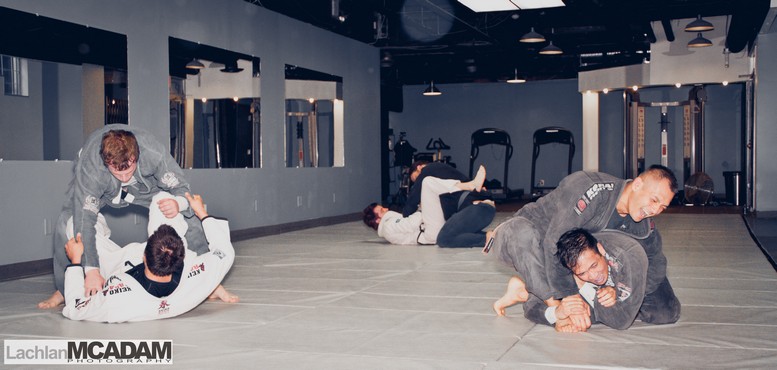
Look for a wide diversity in belt ranks in every class. A strong, healthy Martial Arts school needs to have a broad spectrum of skill levels among the students. When you walk in and look around and all you see are higher level belts or advanced students, that would indicate that many beginners did not feel welcome in the class environment. Perhaps the higher belts are overly aggressive to the new students and using them as their “walking punching bags”.
Conversely, if you see only beginners, this can be an indicator of a high student turnover. If the instructor has been teaching for 10 years and his most senior student has been with him for only 1 year, then that is a clear indicator of either poor leadership or a poor quality product. A well-run Martial Arts school should have a good range of beginner to advanced students.
As well, look to see if there are a lot of women in the classes. I believe that women are a strong indicator of the general climate of the classes. If the classes are dangerous and overly aggressive, then women will leave.
Look to see if the instructor is a strong coach and team leader. I’ve studied in schools where everyone got along and we were all a part of one big team. We were all like-minded and we trained together as a collective whole—helping each other improve and welcoming new students into the group. I’ve also trained in schools where the environment was hyper-competitive and toxic. This stifles learning and hurts student moral. Martial Arts training is a team activity and it is the responsibility of the instructor to instil that in his students.
See if the coaching method is positive or negative. Positive coaching is “Hey George, I really like the way you turn your hip when you throw your straight right punch. Now, turn your heel a bit more and you’ll immediately get more power in your punch. Keep it up George, you’re looking good.” Negative coaching is “You! Ya you! You’re not turning your heel! You’re not turning your heel!” Negative feedback is stressful, abusive and unprofessional.
There’s a mountain of research that confirms that positive coaching, aka positive specific feedback, generates greater results in less time. Instructors that use a negative coaching style is an example of a Black Belt fighter who is a White Belt teacher.
Look to see if the instructor addresses you and the other students by their first name. A motto for any good teacher is “No one cares what you know until they know that you care”. If the instructor does not know the names of his students, then he probably won’t care about your skill development or your safety and you’re simply a walking bank machine to him.
It’s imperative that you find a school that is the right fit for your needs. I suggest looking for a school that offers a free trial week or a free trial month. If they don’t, see if you can pay for a single month with no membership agreement. At my school, I offer a 7 day free trial to all new prospective students. This is my way of proving to people that we are the best school in Vancouver—we offer world class instruction, first class customer service and outstanding value. The InFighting Mixed Martial Arts Academy is absolutely the best and we offer a free 7 day trial to prove it.
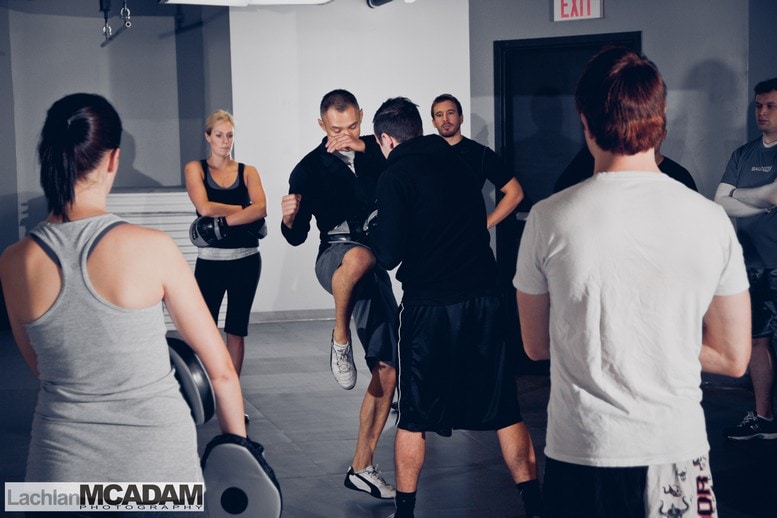
Recommedation #3
Ask questions. Here are the questions I suggest you ask:
How long has the Head instructor been teaching professionally?
One of my longtime instructors was a professional fighter for 22 years. After he retired, he started a career as a coach. When we first met, he was a professional teacher for less than a year. Our private sessions consisted of him beating me senseless for 55 minutes and then he’d coach and offer instruction for the remaining 5. He was a pure fighter and a poor coach.
Professional Martial Arts instructors need to possess both technical fighting skill and eloquent, articulate communication skills.
Most Martial Arts instructors talk about how many championships they’ve won or how many years they’ve been studying martial arts. Although this has relevance, what is more immediately important is their teaching experience and their capacity to pass their knowledge on to you.
Teaching Martial Arts and running a Martial Arts school has been my profession and my sole source of income since 2004. I started teaching part time in 1998. If you walk into my school, you’ll meet over a dozen students who have been faithfully studying with me since 2003. I define myself as an educator first and foremost.
You want to find a Martial Arts instructor who is a professional teacher. Not a retired pro fighter who just wants to prove that he’s tougher than you.
How long has the school been in business?
50% of all businesses fail within the first year. 95% are gone within 5 years.
If the school has been around for longer than 5 years, they are obviously doing something right.
What is the school policy on gang members, drug dealers or known criminals training at the academy?
At my academy, we have a zero tolerance policy for any of our students being involved in criminal activity. Our student base is filled with RCMP, VPD and Canada Customs officers.
Is there sparring/contact in the group classes?
In my Kickboxing class, we don’t do any sparring and the class is absolutely safe. We do “focus mitt drills” that look like we’re sparring, it feels like we’re sparring, but with no contact to your face or torso. We basically just hit each others hands. We offer Kickboxing sparring classes but they are invite only. For my Brazilian Jiu Jitsu class, we only do sparring (“rolling”) during specific open mat times. If people do not want to spar, I do not make them. However, I am definitely there to coach them and keep them safe it they do.
What are the training, teaching, coaching philosophies of the school? Do they even have any?
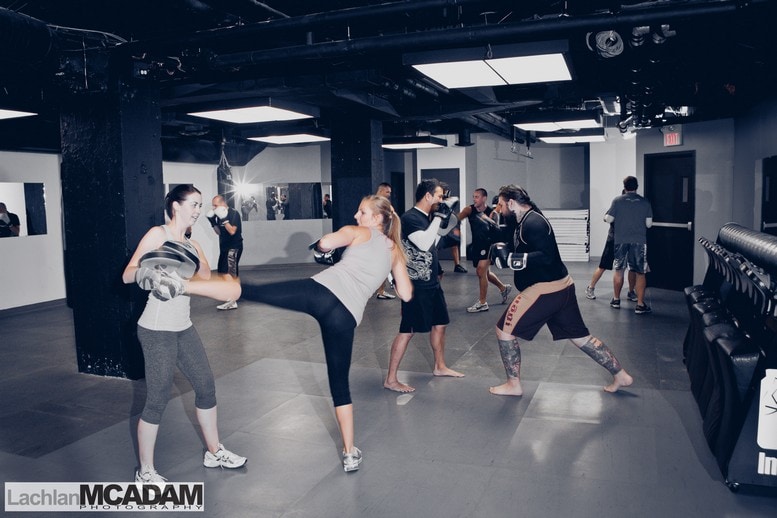
At InFighting, there are 3 quintessential elements to every class
- Safety
- Teamwork
- Fighting Skill
These 3 components are vital in every class. This is how you build an academy and a place for open learning. This is how you build a team of skillful students who are able to take lessons learned from class and translate them to their everyday lives.
Does the head instructor have a day job?
If the instructor is an accountant during the day and a Martial Arts instructor by night then their school will simply be a hobby to them and you’ll be treated as such. Professionalism and customer service will be secondary.
I know people who have been teaching for over a decade but only as a hobby. They work all day behind a desk and then they go to their little Martial Arts school. To them, their school is like a tree fort. You do not want your health, safety and skill development in the hands of a hobbyist. They could be the worst teacher in the world—but if the income from their day job supplements the overhead of their school, they could have students leaving all the time and it wouldn’t matter.
Recommendation # 4
Once you’re satisfied that you are working with an honest, competent professional, and you are interested in becoming a member of their Martial Arts school, it is imperative that you read over their membership form completely and thoroughly. If it reads like a small novel, then insist that you take it home, mark it up with your questions, then ask for further clarification.
When reading over the membership agreement ask:
What happens if I want to cancel part way through the term of the agreement?
What happens if I move?
What happens if I get injured?
What happens if the school closes?
What happens if the instructor changes?
What happens if the schedule changes?
Will my rates ever increase?
Professional establishments will operate on a professional level. Unqualified, amateurish Martial Arts instructors will not only teach on an amateur level but they will conduct business that way as well.
Typically, Martial Arts schools that operate without a membership agreement are run by part-time Martial Arts instructors. Forklift drivers or dentists by day and Martial Arts gurus by night. Your martial arts instructor needs to have a commitment to your skill development and to your well being. They need to act with the highest degree of professionalism and give you 100% of their time and energy instead of just what’s left after their workday. This is your health, your safety and your self-protection. You must take it seriously; and thus, you need to trust the most highly qualified professionals and not someone who sees teaching as a hobby.
In addition, if they are a professional establishment, they need to guarantee their work. And they need to put it in writing. You would expect this from your plumber, from your auto technician and from your lawyer. You should expect the same from your Martial Arts instructor. For example, at my school, the InFighting Mixed Martial Arts Academy, we offer a 60 day money back guarantee on all membership agreements. We are the best and we put our money where our mouth is. If we do not over deliver on all of our promises, then we’ll give you your money back. It’s that simple.
Thank you very much for reading.
I hope you found this consumer guide helpful. If you have any questions or comments—or if you’re in the Downtown Vancouver area and if you’d like to schedule an introductory class to start your 7 Day Free Trial at my academy—please email me at Ritchie@infighting.ca
Thank you kindly for your attention.
Ritchie Yip.


